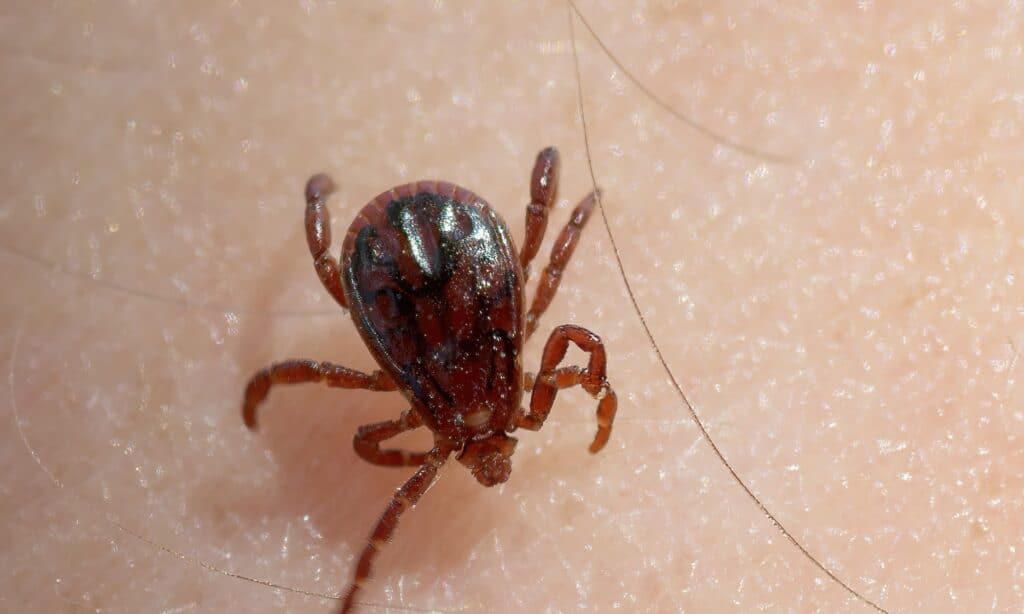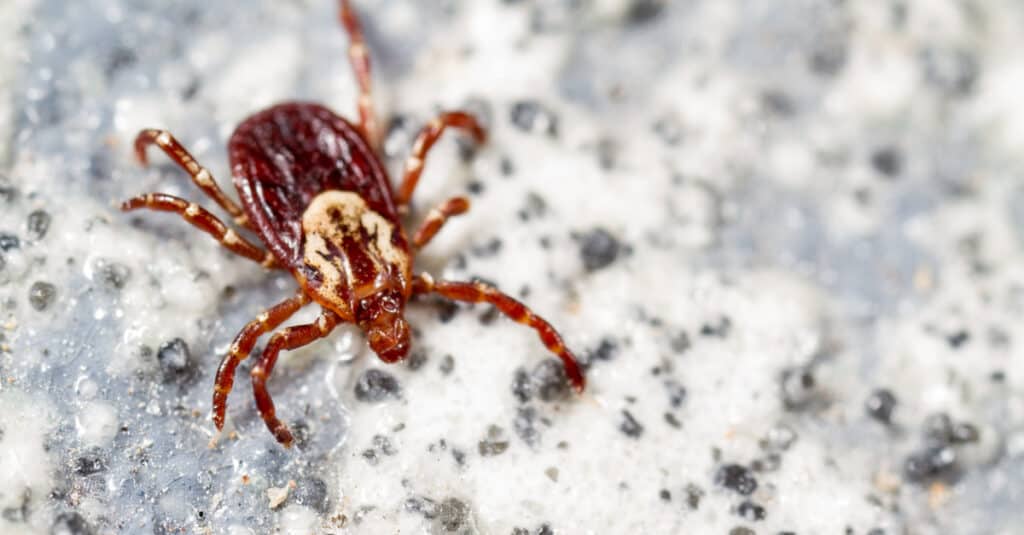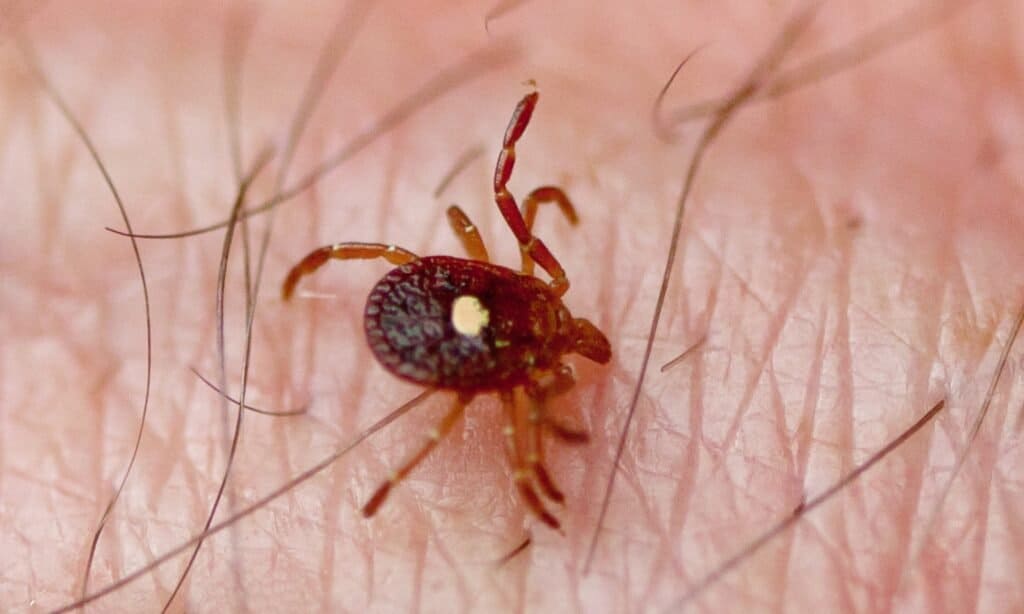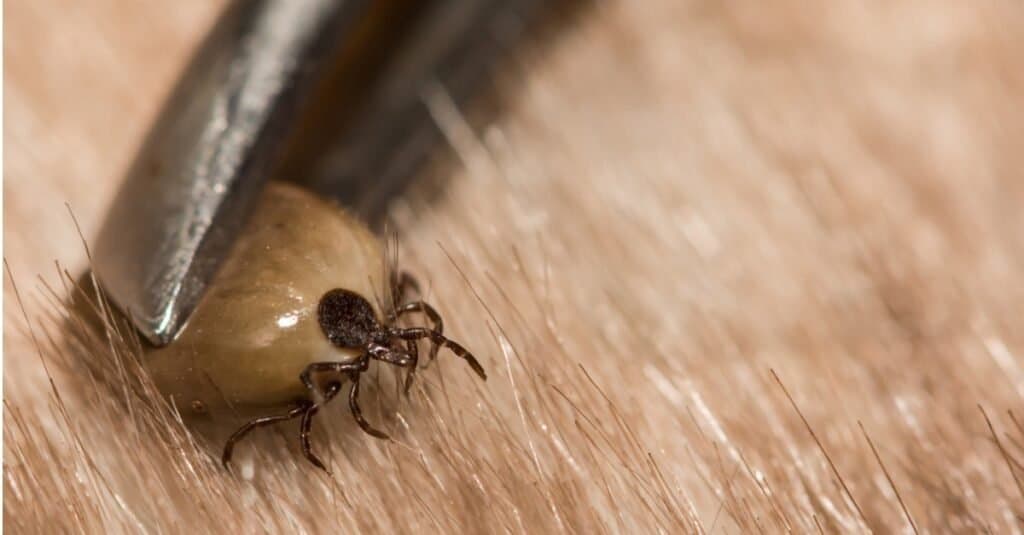There are 13 species of ticks in Minnesota, but only four of those are common enough to worry about. Ticks are some of the most fascinating creatures on the planet, even if their chosen food makes your skin crawl. Like leeches, ticks are obligate hematophages, which means they eat blood, and nothing but blood. Since ticks need blood to survive, they frequently come into contact with humans, dogs, deer, mice, and other warm-blooded animals. Tick bites themselves do little harm; it’s the diseases and bacteria ticks carry, and spread, that give people cause for concern.
In order to avoid ticks in Minnesota, it’s important to know a little bit about them. Here, we’ll go over the four most common species of ticks in Minnesota. We’ll start with the least worrisome species, and end with the one tick you should watch out for—the only tick in Minnesota that carries Lyme disease. Then, we’ll go over the worst times of year for ticks, and what you can do to prevent bites.
Let’s get started!
4. Brown Dog Tick

The
brown dog tick
has a narrow, almost rectangular body. Adults are red-brown and have eight legs.
©iStock.com/RobertAx
Unlike most other species of tick, brown dog ticks aren’t generally found in nature. Instead, they make their homes indoors, anywhere there are dogs. They’re especially common in kennels, dog beds, and dog crates. Though brown dog ticks in Minnesota prefer feeding off dogs, they will also bite humans opportunistically.
Brown dog ticks are vectors for several canine diseases, and can also spread Rocky Mountain spotted fever to humans. To prevent these blood suckers from biting your canine companion, it’s important to treat your dog regularly with flea and tick prevention.
3. American Dog Tick

There are two types of dog tick in the United States; the brown dog tick, and the
American dog tick
. The latter lives outdoors, while the former spends most of its life indoors.
©Elliotte Rusty Harold/Shutterstock.com
American dog ticks are one of the largest species of ticks in Minnesota. They’re light brown, with ovoid bodies and small heads. These ticks feed on small mammals like mice, squirrels, and raccoons during their larval and nymph stages. Adults feed on larger creatures, like deer, cattle, humans, and dogs. Unfortunately for us, the American dog tick is the biggest vector of Rocky Mountain spotted fever in the United States.
These ticks are also known as wood ticks, though they usually live in open fields or grasslands. As their name suggests, adult American dog ticks feed mostly on dogs, though they won’t say no to an easily available meal. Males and females have very similar appearances, though male American dog ticks have more mottled markings.
2. Lone Star Tick

These ticks have a plethora of nicknames. They’re also known as turkey ticks, cricket ticks, and northeastern water ticks.
©iStock.com/epantha
As you might have guessed from their name, female lone star ticks have a ‘lone star’ marking on their back. Males lack this lone star, but do have mottled brown and tan thoraxes. Lone star ticks aren’t as common as other species of ticks in Minnesota, but their bite can still pack a punch. These ticks are responsible for transmitting both tularemia and ehrlichiosis.
Lone star ticks aren’t quite as big as American dog ticks, though they’re still bigger than number one on our list of ticks in Minnesota. As larvae, they feed on small mammals and birds. As adults, these ticks prefer medium to large-sized mammals, including humans. They’re known for their aggressive feeding and long mouthparts. These long mouthparts mean that the bite of a lone star tick goes deeper than any other tick, and can easily lead to infection.
1. Deer Tick

Alternately known as the black-legged tick, deer ticks are the only species of tick in the United States with black legs.
©KPixMining/Shutterstock.com
Out of all the ticks in Minnesota, the deer tick is both the easiest to identify, and the most dangerous. They’re the primary vector of the insidious bacterial infection known as Lyme disease. Because of this, deer tick bites should be taken seriously, and victims should be closely monitored for signs of infection. Unfortunately, deer tick larvae and nymphs are incredibly small, so many victims may not even know that they’ve been bitten.
Female deer ticks have distinct mahogany-colored bodies with dark brown shields (pronotum) on their backs. Males are uniformly dark brown, and both males and females have black legs. Adults are no bigger than a sesame seed, and larvae are smaller than the head of a pin. They may be small, but these ticks in Minnesota can spread serious diseases and infections to humans.
When is Tick Season in Minnesota?
Ticks in Minnesota are most active in the early spring months of May and June. They slow down during the hot summer months, then become active again in the fall. Over the winter, adults hibernate on the ground, hidden by leaf litter. Larvae generally hatch in the spring, and may take up to two years to complete their life cycle.
Do Ticks in Minnesota have Lyme Disease?

Not all ticks carry Lyme disease, just like not all mosquitos carry West Nile virus.
©iStock.com/JasonOndreicka
Out of the 13 species of ticks in Minnesota, only the deer tick, or black-legged tick, carries Lyme disease. Lyme disease is a serious bacterial infection that can cause debilitating effects in almost all the systems of the body.
Where do Ticks Live in Minnesota?
Ticks in Minnesota live in forests, grasslands, and the boundary zones between the two. Brown dog ticks live indoors, wherever there are dogs to feed on. The most common places to find ticks are on the forest floor and on knee height shrubs and grasses.
How to Avoid Ticks in Minnesota
To avoid ticks in Minnesota, avoid walking through low brush or digging around in leaf litter. Wear long sleeved shirts and long pants, and use bug repellent. Always check yourself and your dog for ticks after any outdoor activity.
The photo featured at the top of this post is © Evgeniyqw/Shutterstock.com
Thank you for reading! Have some feedback for us? Contact the AZ Animals editorial team.







